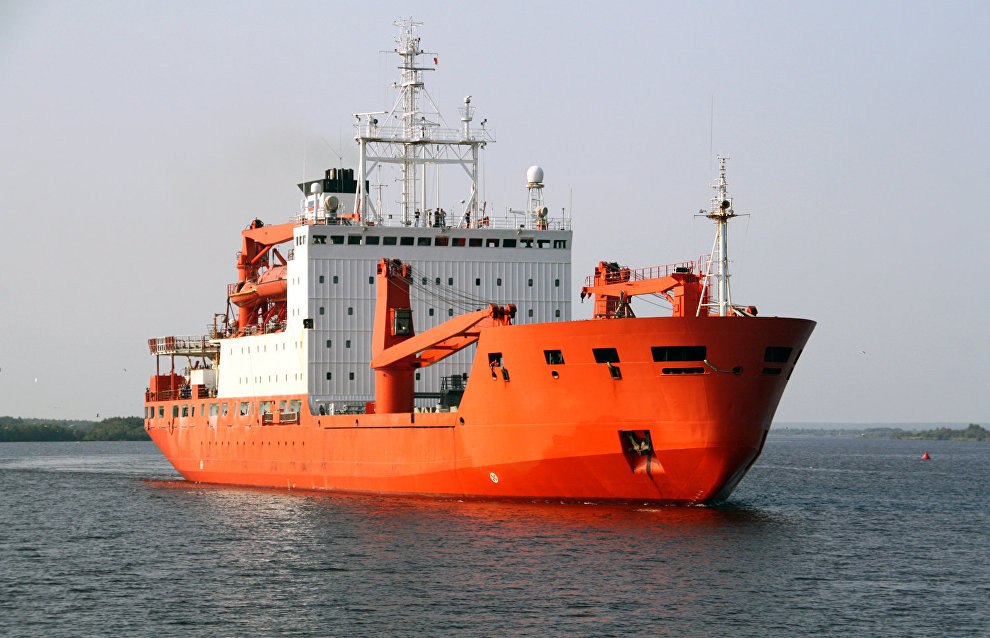Konstantin Zaikov: Arctic Floating University, a unique project
What is the Floating University expedition like?
The Arctic Floating University is a unique project of Lomonosov Northern (Arctic) Federal University (NArFU) that integrates educational, scientific and research processes at several large organizations — NArFU, Russian Federal Service for Hydrometeorology and Environmental Monitoring and Russian Geographical Society, among others. The expedition can provide a wealth of valuable information about the Arctic, expand the scientific vision of students who participate in it and teach them to conduct fieldwork in their specialties. The worldview, educational function is also important. Only after visiting the Arctic and seeing its cold beauty with your own eyes can you understand why these apparently remote and unfriendly waters and lands are so important for the country, and why they lure those who have already been there.
Who took part in this year's expedition? How were participants selected? Were there many applicants?
There were 58 participants from various Russian cities and eight from abroad. These are students of various specialties, graduates and postgraduates, teachers, researchers and journalists. The participants were selected based on their compliance with the expedition's research program, their physical fitness and their academic progress. In addition to their desire to participate in field studies, an independent research program was very important.
What was the expedition's itinerary this year?
It is important to note that due to weather conditions, the actual itinerary differed from the original plan. It was as follows: Arkhangelsk, Solovetsky Islands, Cape Bely Nos, the settlement of Varnek (Vaigach Island), Russkaya Gavan Bay (Novaya Zemlya Archipelago), Cape Zhelaniya (Novaya Zemlya), Hooker Island (Franz Josef Land), Northbrook Island (Franz Josef Land), Malye Karmakuly (Novaya Zemlya; two expedition members were stationed to work there), Sosnovets Island, Arkhangelsk.
What was the daily routine aboard the vessel? What did the participants do?
The invariable components of the daily routine were: breakfast, 8:00-9:00 am; lunch noon-1 pm; dinner, 7:00-8:00 pm; lectures, 10 am-noon and 1:00-4:00 pm; workshops, 4:00-7:00 pm. After dinner, cultural and leisure activities (presentations and films, artistic shows and intellectual games).
Most of the time, the participants were engaged in research as part of their specific projects — data collection, analysis, interpretation and so on. Lectures were obligatory for all undergraduate and graduate students regardless of the subject, which helped expand the students' worldview and give them interdisciplinary knowledge about the Arctic.
Were there any force majeure situations? What difficulties did you encounter?
Weather conditions were a major problem. Storms made the landing on Kolguyev Island impossible, while the ice situation forced us to change the itinerary and head for Franz Josef Land earlier than planned. However, even that made it impossible to land on Kheis Island, as the ship's passage was blocked by ice. Nevertheless, the expedition's scientific program was implemented. By the way, many participants were badly affected by the storms, especially those who went on such a long voyage for the first time. Three storms during one expedition; this is without precedent. The appearance of a polar bear during a landing operation was also a force majeure situation. When it was spotted 200 meters away from a landing party, the expedition members immediately halted the operation and returned to the ship.
What was the most memorable experience?
Mountains on Franz Josef Land. They are simply mesmerizing, leaving an indelible impression.
How was this expedition different from previous ones?
Above all, in expanding international participation. In 2014, there were four foreign nationals in the expedition. This year, there were eight — from Brazil, Germany, Denmark, Iceland, Spain and the United States, as well as two Russians who permanently reside in Canada and Finland. The integrated coastal research program has been enlarged significantly. For the first time, wide-ranging medical and biological studies were conducted among the expedition members and ship's crew, as were sociological surveys of local residents along the expedition's itinerary.
What scientific studies were conducted during the expedition?
The list of all of the studies would take up a couple of pages, so I will just mention the expedition's main scientific research units: hydrometeorological, ecological, biogeochemical, biomedical, geo-informational, cartographic and geodesic, historical, cultural and sociological, biological and bio-resources. Thus, we studied the Arctic climate, its flora and fauna, soil, the environment, human adaptation to living in high latitudes and local values, among other things.
Have any interesting discoveries been made?
Yes. Ornithologists have acquired important information about birds and their habitats. Soil scientists gained new insight into the natural zonation of the Arctic, and perhaps for the first time in history found endolithic communities in the Arctic (Cape Zhelaniya, Novaya Zemlya). In any case, many of these findings still require extensive processing, so it is too early to make final conclusions.
Will the data collected during the expedition be presented in scientific papers or will it be transferred to the relevant agencies, for example, the Federal Service for Hydrometeorology and Environmental Monitoring?
A general expedition report on the research results will be published. In other words, the reports of each scientific research unit will be integrated into one collection. It is due to be published in late October 2015. It will be available online in the public domain.
This is the seventh Floating University expedition. What's the reason behind its success? Will there be an expedition next year?
The secret of its success is simple. During one relatively short expedition (about three weeks), a great number of valuable data is collected in various fields — from botany to geology to hydrometeorology. Students practice field studies and expand their scientific outlook. In other words, each expedition is beneficial for research projects conducted at the Northern (Arctic) Federal University and for the university's educational process. We will do all we can to make sure that the 2016 expedition is held.
